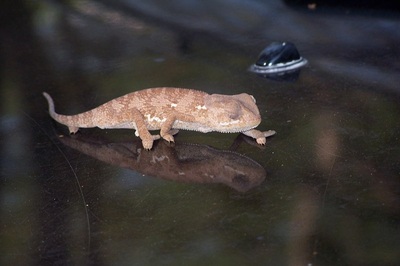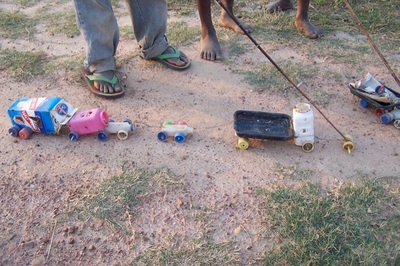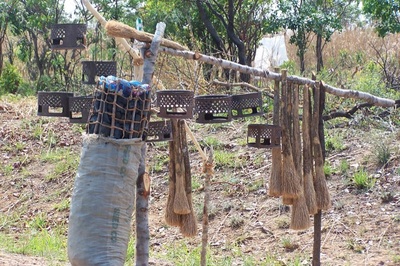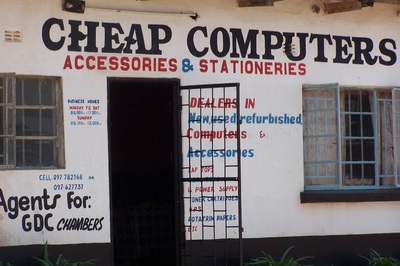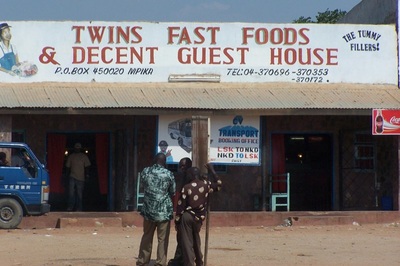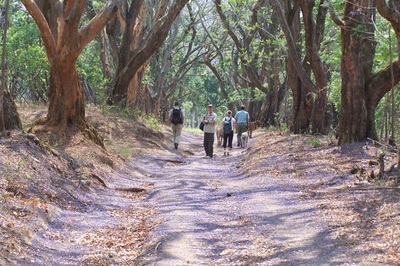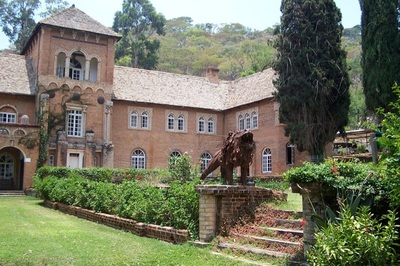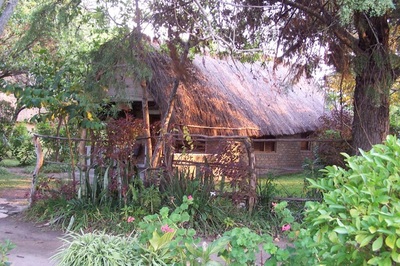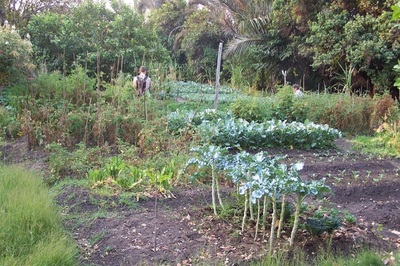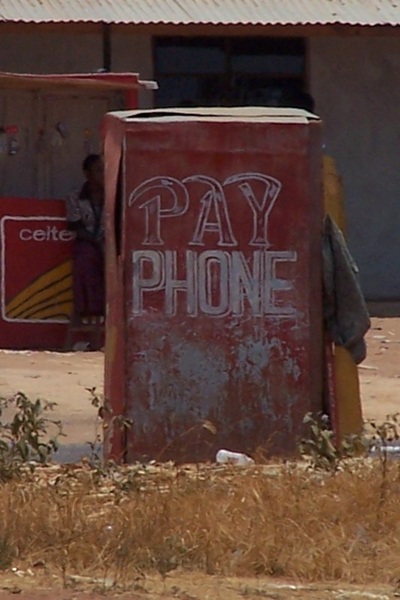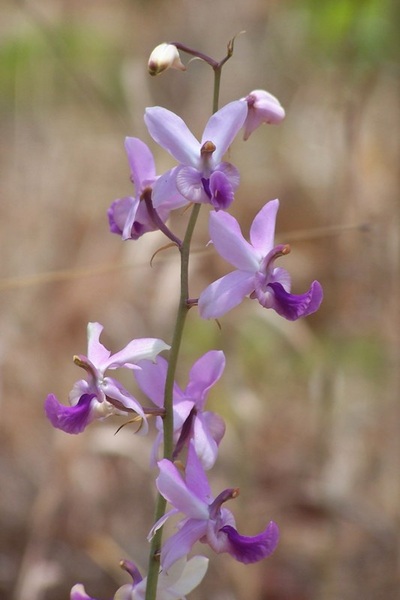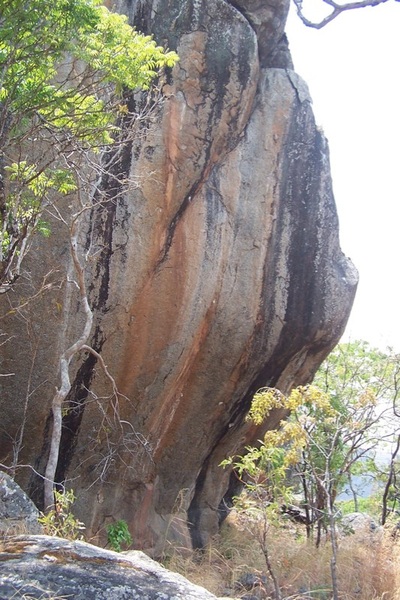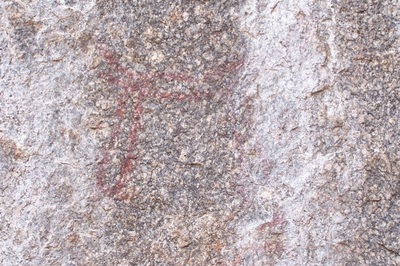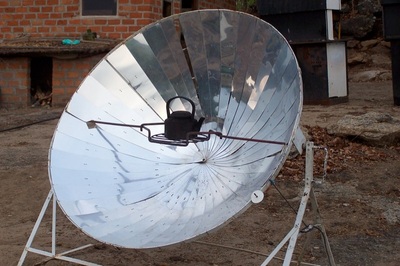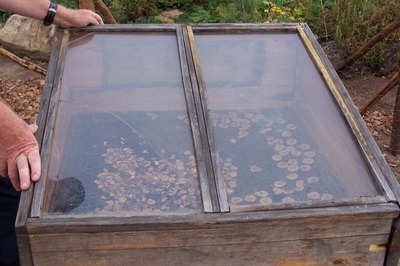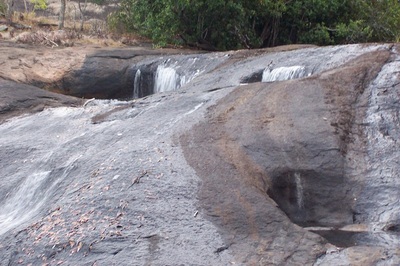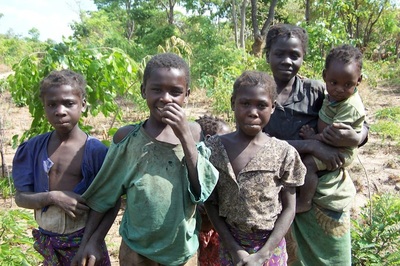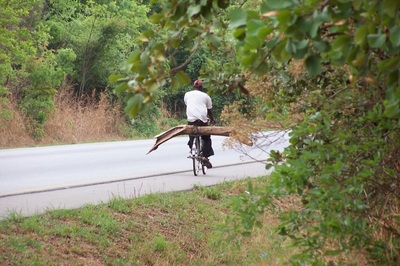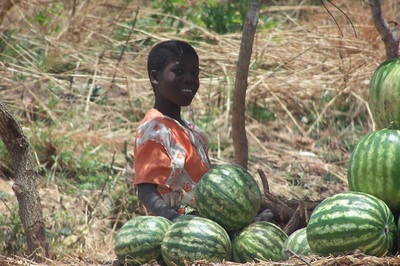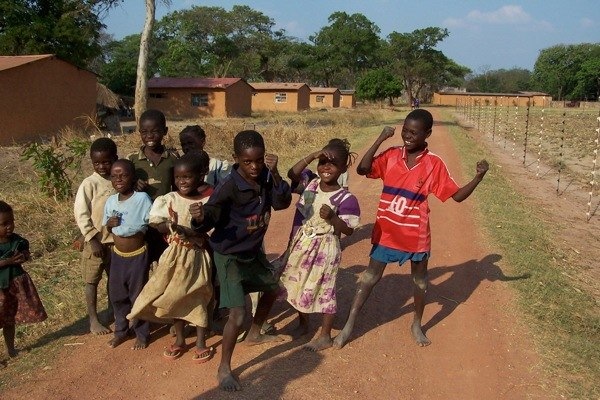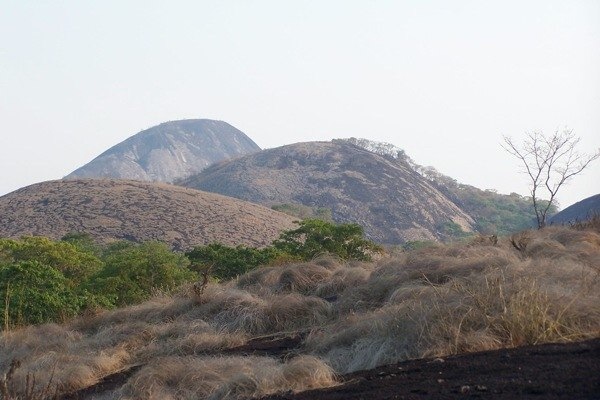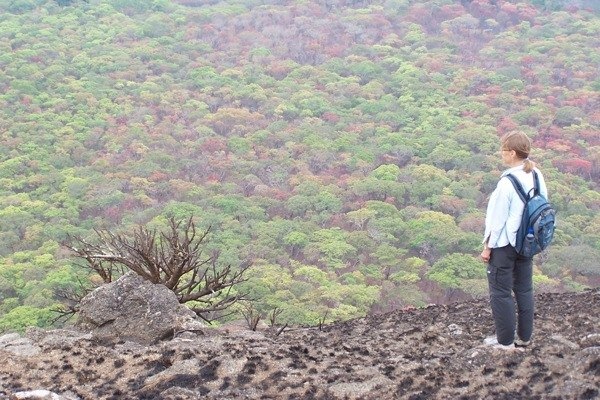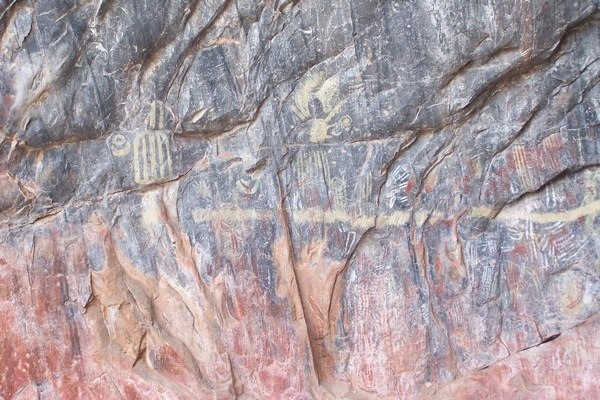- Home
- 2023
- 2019-2022
-
2017-2018
-
2014-2016
-
Azerbaijan
>
- Nakhchivan May 2016
- Quba Apr/May 2016
- Museums Feb 2016
- Friends & Gatherings Baku
- House and Plants
- Around Baku
- Qax June 2015
- Billy's Decade Party
- Ganja & Goygol Oct 2015
- Lahij Feb 2015
- Yanar Dag/Ateshgah
- Petroglyphs/Mud Volcanoes
- Oguz, Xal Xal: Oct 2014
- Absheron Park: Sep 2014
- First 2 Wks Baku: Aug 2014
- Turkey >
- USA >
-
Azerbaijan
>
-
2011-2014
- 2008-2011
- 2006-2008
-
2003-2006
- Cars & Motorbikes
- Mom & Dad
- Seattle & Bellingham
- New Page
NORTHERN ZAMBIA: COT 2006
|
Join us as we take a trip through Northern Zambia.
LEAVING LUSAKA: 22 OCT 2006 Sunday sees us meeting Bob at Manda Hill Shopping Mall (yes we do have 2 small shopping malls here) for a coffee and muffin before starting off on our first African adventure. We’ve purchased a tow rope, jumper cables and a Zambian map, packed outdoor clothing, sunscreen, water, some munchies and we’re ready to see what lies ahead. Taking 2 cars as well as having Bob, who has lived many years in Africa, along on the trip gives a nice feeling of security to we “African newbies”. We’re told that the road to the north of Zambia is well paved (2 lane) and that petrol is available along the way – follow the rule of “top up the tank” whenever the opportunity presents itself. Our two main destinations are “Shiwa N’gandu or The Africa House”, an early 20th century English style estate built by an eccentric gentleman and the “Mutinondo Wilderness” which is an area with lots of outdoor opportunities. Sunday: We head out of the craziness of Lusaka traffic onto the “Great North Road”. (There is a Great East, South, and West as well) There is literally ONE road (paved) which heads to this northern part of Zambia. The first hour is filled with lots of people walking on the road, large farms, small villages, blue sky and a fair amount of traffic. After an hour, the traffic thins out and now we’re into an area of stall after staff of watermelons, tomatoes, onions and potatoes. Road traffic can’t possibly purchase all that is offered – maybe it is a problem of getting the produce to market – the farmer can get the produce out to the side of the road, but maybe not any distance to a town center?? We can’t resist the tempting watermelons and buy one from a small stand – they are over $3 in the city, but only about $1 here. It’s Sunday morning and in this Christian nation, many, many people are walking to church. In the rural setting church is as much a social gathering as a spiritual endeavor. We remark on the pristine, white blouses, colorful skirts and neatly pressed shirts and ties. How can people living in a one room hut with a dirt floor and no electricity have such clean and pressed clothing? A friend tells us that everyone has a charcoal iron and when you don’t have much clothing, you take really good care of what you do have! Some of the women wear bright blue “Manawasa” skirts – Manawasa just won the recent presidential election – the skirts may be a statement or maybe a good strategy by the political party for gaining votes. It seems as if every lady of child-bearing age carries a baby on her back – the baby carrier is a piece of cloth wrapped around the baby and then tied above the woman’s breasts. We hypothesize that the babies travel with mom until they are weaned and that toddlers are watched by older siblings, grandma or aunts. We reach Kapiri Mposhi where the road forks and fill up with petrol – yep the price is about $6 a gallon. I’m pleasantly surprised by the toilet at the gas station – I pay about 15¢ to an attendant and it’s well worth it – very clean, modern flush toilets – after some of the facilities in China I’m about ready for anything! It’s only about a 4 hour drive today and we reach the Forest Inn where we will spend our first night. It’s a lovely setting with about 8 chalets, a dining room and campground. The chalet has a thatched roof and it smells great. We take a walk thinking that we’ll find interesting birds, but head in the wrong direction and end up at the village near the edge of a farm. Here, the children swarm us wanting us to “snap them” (take a picture). We take snaps and it’s the first of Bob’s attempt to get names and addresses of someone to whom we can send the pics after getting them printed. Somewhere, sometime these kids must have seen a “Kung-Fu” type picture or movie because they are all posing like karate fighters!! Here we see some kids with the most innovative “toy vehicles” made completely out of throw-away things – water bottles, caps, milk cartons. It’s the only ‘toy’ that we see anywhere in the villages. Dinner is very nice and we make friends with our waiter – a wonderfully personable young man who is working at the Inn and saving money so that he can go to University here in Zambia. His income varies with the number and generosity of the customers, but he’s trying to work for a year in preparation for study in the field of electrical and power. He seems to be a success story of a village boy with smarts and drive. MONDAY, 23 OCT 2003: SHIWA N'GANDU After a great breakfast we’re back on the road and traffic and people are less and less the further north that we go. We stop a couple of times for gas and at the last town before heading to the Africa House. I have to laugh at myself now – I had planned on just stopping at a grocery store in one of the towns along the way and picking up some groceries – ha ha!!! No town up this way has a grocery store – there are some small markets with a few limited commodities and then some produce stalls. Oh well, we do find some baked beans, macaroni, bread and a few staples that will keep us if need be. Now this note is just to let you know that we never saw one patrolling sheriff or highway patrol, unless we were at a police checkpoint. There are some parts of the roads that are wide, shouldered, and not a bump or hole in them, EXCEPT for an occasional hole that would kill your car’s front end and probably flip the car. So we learned in a lucky swerve to one side that road maintenance and warning signs for road hazards did not exist either. It was so unbelievable to see a great road with such a huge hole in it with no warning! (Can you also imagine driving for hours and hours and never seeing one sign for commercial advertising?) The police check points are frequent, every 50 km or so. Lots of immigration from the Congo area, trafficking of illegal goods, stolen cars, and apparently taxes that have to be paid by some kind of commercial vehicles. Stories abound about the officials asking for ‘handouts’ as well, however, this form of corruption in government was not experienced by us. The Jehovah’s Witnesses have really made their faith known in this area. All along this road for about 500 km there were about 8 police checks, hundreds of small villages and maybe 200 Jehovah’s Witness halls. Each hall is identical to the one before it – a rectangular brick building with 3 large windows of lattice work in the front. The music of this area seems to be a blend of reggae like music with traditional drums – however we did hear straight US country-western music blaring in one of the towns. Wherever there is water, there will be a village. The main road is like the backbone with small dirt paths extending out like the ribs. Just outside of the town of Mpika Bob picks up a young woman walking along the road who turns out to be a Peace Corps volunteer. (Bob has this amazing ability for picking up interesting people all along the journey – local teacher, immigration officials, workers…) Her village is down the main highway about 15 km and then about 4 km down a dirt road into the bush. We follow as Bob drives her into her village. So here’s this young woman in her early twenties, plopped down in the middle of a Zambian village, trying to add some positive energy and direction. She shows us around – it’s a typical village – adobe-like huts with thatched roofs, dirt floors, no electricity. The school is an open-air hut with benches, no books or maps or any teaching supplies. (Most schools have a real building and some supplies.) The local teacher often comes drunk to work or sometimes doesn’t even come at all. She faces lots of challenges but the villagers are lovely people and the kids eager to learn. Her small living space contains lots of cards and pictures from home, she cooks outside, bathroom outside, solar shower outside and she can make the journey into town occasionally to use the internet and receive email – that’s a real blessing! I do think of her when the sun goes down and she is in the darkness of the Zambian bush. Bob, a former Peace Corps volunteer, gives her a pep talk and a bottle of wine! We continue north until we see the sign for Shiwa N’gandu – 12 km down a dirt road. How to explain this anomaly – an estate built in the early 1900’s to duplicate the estates of England from that time period. The builder was an Englishman who wanted to bring all of the trappings of his life in England into Africa. Fine china, huge framed portraits, furniture, books and much more – all shipped from England, sent by rail as far as possible and then carried for weeks through the bush by hundreds of local porters. It’s all explained in a very interesting book titled “The Africa House” by Christina Lamb. Anyway, the huge brick house after falling into disrepair for many years has been renovated by a grandchild and family of the original owner and it is now their home, working farm, game reserve as well as a tourist attraction with house tours and rooms to let and aircraft landing strip. It truly is a step back in time to an old English manor house but crazily surrounded by the African bush. As late as 2 years ago, a lion was wreaking havoc around the farm and crocodiles still inhabit the lake below. We have dinner and settle into our room – with much of the original furniture – huge, dark, heavy pieces of wood and adjoining bathroom with claw foot bathtub (but updated plumbing), concrete block floors covered with throw rugs… In the sitting room are pictures of the restoration efforts and we can see the mammoth efforts that have gone into rescuing this crumbling beast from the bush. The head of housekeeping for the place is the grandson of one of the workers who worked for the original owner and we imagine that this scenario is repeated for many of the workers in the surrounding village. There are horses, schools, medical clinic, church, gardens, vegetable gardens, chicken and poultry raising, homes for the workers. TUESDAY, 24 OCT 2006: SHIWA AND KAPISHA HOT SPRINGS Tuesday: The owners of the house are away on holiday and 2 Swiss friends of their’s, Dora, who works in Kasanka National Park and her nephew, Rene, are dog sitting the menagerie of assorted dogs and puppies. We all take the dogs up a small bluff where the original owner is buried. The bluff, quiet and peaceful, overlooks a valley and large lake – the story is that the owner while working to determine boundaries of what was then Northern Rhodesia came upon this spot and decided that this was where he would build his estate. Back down off the bluff we walk around the estate – it’s so incongruous to see small brick cottages straight out of the early 1900’s England scattered about the African bush. We see the rusted remains of a large steam engine used in previous days for some kind of farm work. The working estate here extends to include a farm, a well stocked game-ranch, a lake, stables and all the support necessary for almost total self-sufficiency – directly employing up to about 200 people at any one time. It covers just over 100 square km of land with about hundreds of cattle and sheep, as well as pigs, goats and stabled horses. The game farm has expanded to about 1500 large animals, and these are being added to all the time to improve the bloodlines of the existing herds, and increase the numbers. There are a few crops grown, but these are used largely to feed the people on the farm and the livestock. The farm’s staff are encouraged to have their own plots on which most grow vegetables and maize. Aside from the agriculture, the estate’s hospital has been brought back to life. Around mid-afternoon we head another 20 km further along the dirt road and farther into the bush to a place called Kapisha Hot Springs. Here, 32 km from the main road and then another 70 km to the nearest small town sits a lovely resort with quality dining and a handful of simple yet lovely chalets for rent. The vegetable gardens are incredible!!! – every kind of vegetable imaginable, organically grown, along with many fruit trees. The hot springs are equally enjoyable – imagine a fissure 6-7 km deep down into the earth and bubbling up into this pool of lovely warm water. We have our swim suits and take advantage of the hot water – it’s so weird to reach your arm or leg down into one of these bubbling spots – it’s like quicksand and feels as if it is ready to suck you down into its depths. The owner here is another grandson of the original owner of Shiwa N’gandu. He also runs a safari camp in the North Luangua National Park. Tonight is Indian food and so from this remote location we have a full-fledged Indian dinner with at least 10 different dishes. It’s a late, dark drive back to Shiewa N’gandu, but fun to be out and about the bush at night. However, throughout our journey home that night we saw large fires burning over the valleys, most of which are intentionally set by poachers. More on this later. WEDNESDAY, 25 OCT 2006: MUTINONDO WILDERNESS #1 Wednesday: Before leaving Shiwa N’gandu we have a bit of time to explore the archives left from the original owner. He was a copious note taker and there are books of notes from each year and day. We look at the one for the same day as we are there, only 90 years ago and see what was done on the farm that day, what food was used, what visitors were there, what animals were born or died… We can see him writing by candle light each night and putting some order into this unordered African world. Leaving Shiwa N’gandu we retrace our route back to the town of Mpika where we find a post office and send a letter to the US – we’ll see how long and if it ever makes it at all! As we gas up we are swarmed by women selling produce – all carried on their heads as most everything is done in this country. We stock up on a few items, but pass on the mounds of dried caterpillars which look as if they are alive from the flies buzzing amidst them! We continue on to find the sign for the Mutinondo Wilderness – another 25 km down a dirt road and we find an eco-friendly camp? Resort? Can’t find the right word for it. They have campsites, 4 open-air chalets, open-air bar, dining room, office, enclosed kitchen and another dining room for rainy season – everything built of beautiful brick and stone. They are located in a field of ‘granite inselbergs’, a new word for us, which are small to large rock outcroppings which look like humped back whales swimming through the bush. These inselbergs make a huge line from Tanzania all the way down through Zambia. These inselbergs vary from 100 meters long and 100 meters high to ½ km long and about 250 m high. This spot is on a plateau and another 25 km further and down an 800 meter escarpment is the North Luangua National Park with all of its animals. Here there are no big game – no elephant, lion, hippo, rhino, crocodiles – so it’s wonderfully safe to hike the many trails and swim and drink from the streams. From the top of an inselberg you can look for miles in all directions and see no evidence of civilization anywhere. Sadly we watch the burning of large bush fires – set by poachers in order to more easily kill the game. There is still a large market for “bush meat.” Zambia is struggling to preserve its game and is making some progress in the national parks, which feed the growing tourist industry, but in other areas poaching is still rampant and not much is being done to discourage it. The owners here, Larry (wife) and Mike (husband) are very friendly and do everything they can to answer our questions and make our stay here enjoyable. There are paths to hike, stream to canoe or swim, horses to ride… There are solar-powered hot showers in the chalets, mosquito netting around the beds, although we didn’t encounter a mosquito in our whole journey, and cold soft drinks and beer! The staff delivers tea or coffee to your chalet in the morning at whatever time you request and the food is exceptionally nice. Mike has a telescope and we see Jupiter with 3 of its moons and look at our moon in detail like I’ve only seen in pictures before. The sky was incredibly black and filled with more stars than we think we have ever seen at one time. Night falls quickly and with just a flashlight (or torch as they are called here) and a solar-charged lantern we retire quite early. THURSDAY, 26 OCT 2006: MUTINANDO #2 Thursday: Morning comes early and we are up with the sun and ready to go exploring. We head out across the stream and down a path looking to get to the top of one of the inselbergs. We hear what we think may be a pack of wild dogs and continue cautiously as we hear them going further away from us into the bush. We learn later that they were baboons! Just sending a warning that intruders were in the area. As long as they are more afraid of us then we are of them, that’s just fine with me!! We hike up a small inselberg named Kite Rock and have an early morning sit at the top before hiking down for breakfast. After a leisurely breakfast we make plans with Bob to hike out to Hyrex Hill where there are some cave paintings. We take numerous pictures of flowers, trees, insects, large holes in the ground that we speculate about – wrongly as it turns out – they are anteater holes! We fill our water bottles at the stream – what a luxury to not have to carry so much water! At the cave there are really some cave paintings from the Stone Age – symbols and what looks like an animal in a reddish color, still distinguishable on the walls, and along the base of the cave there are numerous pottery shards. Glancing up at one of the smaller inselbergs, we found a solitary sea shell embedded into its side. How a single sea shell got there is going to stay a mystery to us. We hike back for a late lunch and afternoon rest. Toward evening we take another walk to the second water-fall – quite tame during this dry season, but pretty. We meet a family of bush pigs along the way – again heading away from us and I’m content to see their backsides. It’s another early to bed evening – love the cool breeze from the open-air chalet. FRIDAY, 27 OCT 2006: NSALU CAVE Friday: OK, our last early morning walk and we again hear the baboons. We think that they must come down to the stream to drink at dawn before heading out into the bush for the day. We must have been in their area both days about the same time – again I’m very glad that we only hear their warning calls and don’t meet them face to face! It’s up the tallest inselberg today with lots of wind and views forever at the top. This “bush” is very different then we expected – we see so many pictures of Africa with tall, open grasses – this bush is similar to parts of Arizona pretty densely covered with small trees and bushes. It’s back down and back for breakfast, check out and back on the road. Along the road we plan to stop at a place called “Nsalu Cave” and do find the battered and hard to read sign along the way that tells us that this is a “National Monument.” We meet Emmanuel at the start of the road and it turns out that he is the caretaker for this monument, just returning from Mpika. He rides with Bob down the 22 km dirt road to the cave. All along the road are small houses and villages where all children run out to wave and say hello. I imagine that not that many vehicles come down here. The road isn’t too bad and we bounce around for about 45 minutes until we come to the cave. Emmanuel hikes us up the hill to the cave and it’s a shock to see the modern day graffiti mixed in with Stone Age cave paintings. “Believe in Jesus” and “Motundo was here 2005” and scores of others wordings sit right on top of priceless mementos of the ancient past. It’s kind of like the Information Age meets the Stone Age. Emmanuel tells us that the government has plans to pump some money into this monument, add some more attractions and clean it up. We wonder with so many other challenges of this country, whether this will happen or not but it’s nice to think that it might. We are told that about 100 people a year visit the cave. Now this Emmanuel is quite a character. Along with being the government employee in charge of this National Monument, he is a traditional herbalist/healer who receives his ‘training’ and knowledge from visions in which his ancestors come to him and tell him which plants to use in which ways to cure various illnesses. He is eager to show us plants – this one you boil the leaves to make a tea to cure a breathing aliment, this plant you use the roots for something else, this plant will help you if you are bewitched, this plant is used for sexual prowess – his statement is that it would make a lot of money in Europe! (he’s probably right) His home is about 4 km from the cave and he needs us to put our “particulars” in the government book of tourist visitors. We park outside the road and walk about ¼ mile back into the bush to his home. His third claim to fame is that he is the largest farmer in the area, he grows maize and has other workers that do piece-meal work for him. We sit with him outside his home – a traditional African hut and meet his wife and 3 of his 8 children. There is a book with about 100 entries from the past couple of years of other tourists who have stumbled through this way. Bob takes a family picture and gets yet another address of which to send a photo. Emmanuel gets one of his workers to cut some small branches with leaves from the nearby bush and insists that we take them with us – dry the leaves and make a tea from them he says – we’re not quite sure what the tea is for. The leaves are now drying at our home here in Lusaka and we’ll let you know if we get brave enough to try to make a tea! The long drive out and back from the cave is all worth-while to meet this character! Of yeah, the cave paintings themselves are quite remarkable. Many more paintings than in the small cave from yesterday and from different eras – Stone Age to Iron Age – different colors and different symbols. If we had more time Emmanuel would have taken all day to show us the source of the ancient people’s water, where they are buried and all the plant lore that we could stand. However, the day is slipping by and we have to be back to the Forest Inn by nightfall. It’s incredibly dangerous to drive here after dark – vehicles with one or no lights, vehicles that stop in the road, potholes that you can’t see… So we’re back to the main road and make it to the Forest Inn by early evening. Along the way Bob picks up a local teacher and drives him for a way and then drops him off and picks up a couple of immigration officials. Interesting to get Bob’s report on the lives, joys and challenges faced by these people. SATURDAY, 28 OCT 2006: BACK TO LUSAKA Saturday: Saturday is a leisurely drive back to Lusaka – getting more and more crowded along the way. We stop along the side of the road for a traditional charcoal burner, a broom made from a tree, watermelon, honey and one last stop at a real restaurant/deli (yes, you can tell we are getting back to what some would call civilization). Then it’s full stream into the craziness of Lusaka where we stock up on groceries and head home. So ends our first venture into Africa. We are left with impressions of beautiful countryside, miles and miles of open land, wide smiles of local people, reds and oranges of sunrises and sunsets, challenges of poverty and poachers and for us, a growing understanding of this tiny piece of the very large African continent. |
Photo Gallery: click each to see a larger image.Mutinondo: short video |
